Overview
South Carolina is a state that falls within the humid subtropical climate. It is characterized by hot, humid summers and mild winters. Hot summers are experienced throughout most of the state whereas mild winters predominate in the eastern and southern part of the state, but cool to occasionally cold winters are the standard in the northwestern areas of the state.
South Carolina state is well known for many things including being a state that’s filled with scenic areas and diverse plant life. Palm trees by nature are a graceful sight to behold and can be found growing in many areas of South Carolina from Union, Dorchester, Colleton, Orangeburg, Williamsburg, Barnwell to Newberry counties.
If you’re looking to start a collection of palm trees that grow in South Carolina, then you’ve come to the right place. From tropical to cold-hardy varieties, there is a handful to choose from. More common palms in South Carolina include several date and fan palms, though the Sabal Palmetto which happens to be the state tree is the most popular and widely grown because it’s hardy to the cold and salty sea air.
This article gives an overview of information about palm trees that grow in South Carolina including their names, size, pictures and growing location.
List of South Carolina Palm Trees
- Jelly Palm Tree
- European Fan Palm
- Mexican Fan Palm
- Needle Palm
- Saw Palmetto Palm
- Windmill Palm
- Date Palm
- Queen Palm
- Bismarck Palm
- Guadalupe Palm
Description
California Fan Palm
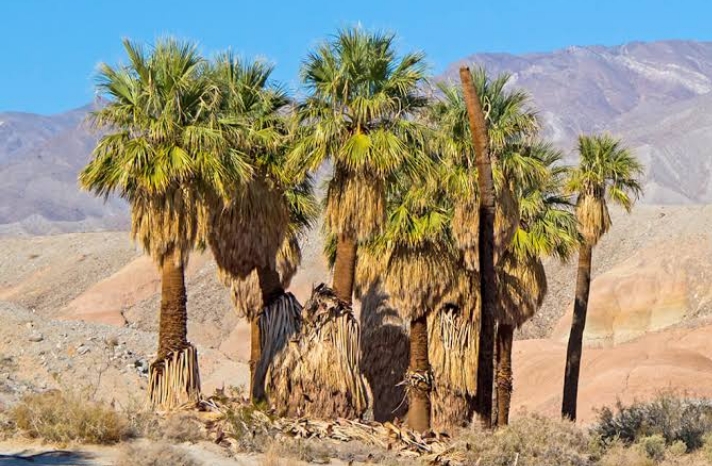
California fan palm tree is a dramatic palm commonly growing in streets, parks and along beaches in South Carolina. It is characterized by attractive grayish-green spiny fronds and a sturdy columnar trunk. When its fronds die, they remain attached and drop down to cover the trunk forming a dense skirt. These palm trees are quite tolerant of cold, salt and alkali soil, a quality which also makes them great for coastal plain areas such as Georgetown, McClellanville, Edisto island, Hilton Head Island, Myrtle Beach and Mount Pleasant.
California fan palm is definitely very easy to care for especially once established. It is also a long-lived palm, with a lifespan of beyond 100 years. The only disadvantage of this palm tree is that it grows so large and only requires to be grown in large spaces. It is not ideal for growing in small yards or gardens.
Key Highlights
- Scientific Name: Washingtonia filifera
- Other Names: Desert Fan Palm, California palm, Arizona fan palm
- Native Area: Baja California
- Leaves: Gray-greenand fan-shaped
- Size: 50-80 feet tall
- Trunk: Columnar, grey to tan in color
Dwarf Palmetto

Sabal palmetto also referred to as Dwarf palmetto is a palm tree that’s highly valued in South Carolina for to its tropical appearance. It can be found in very many places across the state growing in containers or small gardens. The mature height of this palm is about 6 feet tall, but it will rarely reach a height of more than 4 feet. There are usually no more than half dozen leaves on a single plant. The palm in general has an advantage of being easy to grow and maintain.
Dwarf palmetto is also extremely versatile in its uses. Its leaves can be used for mulch or decorative purposes and when planted in rows that run parallel to each other the palm makes a great hedge. The More importantly, the dwarf palmetto is hardy in all areas of South Carolina. It is not only tolerant to winter colds but also very resistant to drought and salt water exposure.
This palm is not only perfect for any garden or patio but also useful as a living room plant. If you’re in South Carolina and you happen to be an apartment dweller who doesn’t have a yard to plant anything, this palm is ideal for you. The only down-side of growing Dwarf palmetto palm is that it grows slowly and it can take up to 10 years for it to reach maturity.
Key Highlights
- Scientific Name: Sabal minor
- Native Area: Southern United States
- Leaves: Shiny dark green, fan-shaped
- Size: 4-6 feet tall
- Nature: Evergreen
Pindo Palm Tree

Pindo palm is an exotic palm common in many home gardens and yards across South Carolina. This is a small to medium-sized palm characterized long feathery blue-green leaves that curve in towards the trunk. At maturity, the tree features a heavy trunk that is patterned with the stubs of old leaves. In America, this palm tree is also referred to as Jelly palm because its yellow-orange fruits that are used to make tasty jams and jellies.
Other than being easy to grow and maintain, Pindo palm is extremely hardy in all areas of South Carolina. It is among the feathery palms that can withstand temperatures of as low as -100C (14OF). It is also tolerant to heat, drought and salt water exposures. The palm is also known to have an impressive lifespan of up to 90 years. The only problem many people have with this palm is its slow rate of growth. It grows between 10-24 inches per year and can take more than 10 years to reach full maturity.
Key Highlights
- Scientific Name: Butia capitata
- Other Name: Pindo Palm
- Native Area: Brazil
- Leaves: Blue-green to Gray-green
- Size: 10-20 feet tall
European Fan Palm
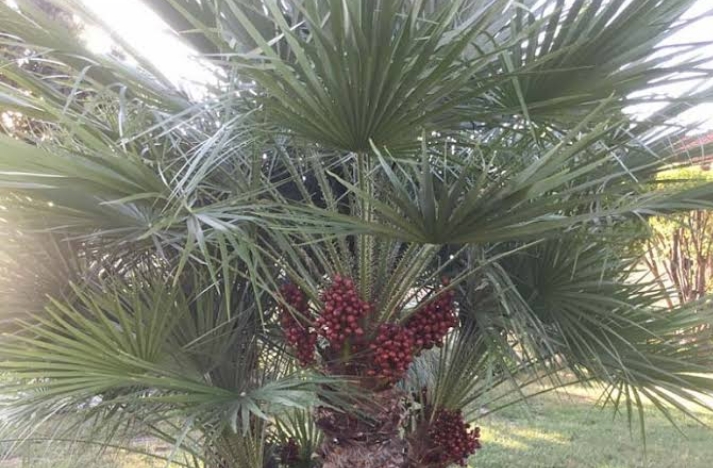
European fan palm is the only palm tree native to Europe. It is a bushy evergreen clumping palm with stiff bright-green leaves and spiny long stems growing from a single base creating a jungle-like effect. This is one of the most popular palms you will find growing in planters or containers in many garden yards around South Carolina. In places like Abbeville, Aiken, Anderson, Allendale, Belton and Barnwell counties, its difficult to miss coming across this palm plant.
Just like other fan palms, European palm tree is not only drought and salt tolerant, but it is also cold-hardy, with ability to tolerate subzero temperatures. The only frustrating thing you will have to put up with especially when grown in containers is its high maintenance requirements in the form of fertilizer and watering. The palm is also a slow grower, often growing between 5-6 inches in a year.
Key Highlights
- Scientific Name: Chamaerops humilis
- Other Name: Mediterranean dwarf palm
- Size: 8 to 15 feet tall
- Growth rate: Slow
- Leaves: Blue-green to silver-green, fan-shaped leaves
Mexican Fan Palm
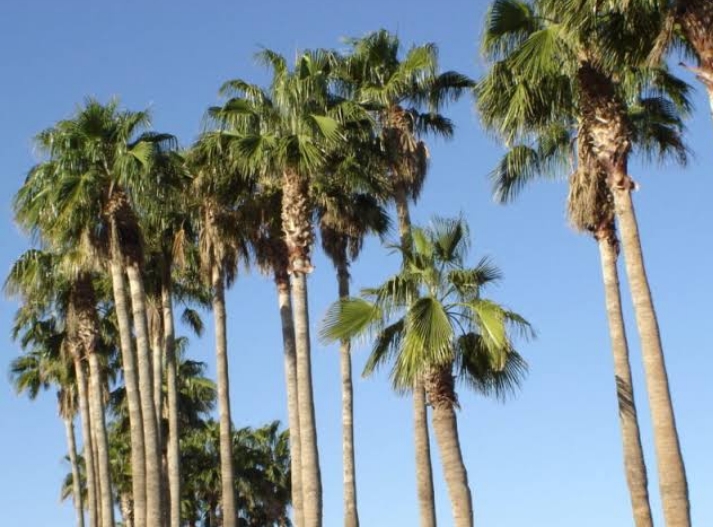
Mexican fan palm, also referred to as Washington palm tree is palm variety that marries well with South Carolina’s climate. The palm generally has a columnar trunk that grows up to 100 feet in height. The trunk bulges toward the base and narrow near the canopy. The leaves can be 5 feet long and 2-3 feet wide, with sharp spines along the bases of the leaf stems. The leaves droop down as they die, lying against the trunk in a way that resembles a hula skirt.
In South Carolina, this palm is often planted in groupings or in a line along driveways or roads. There are some gardeners who grow it in planters and use it to accent patios or entryways to their yards for a few years before transplanting it elsewhere. When cared for properly, this fan palm can live beyond 90 years.
The good thing about Mexican fan palm is its fast growth rate. With just little care, it is able to grow at 36 inches per growing season. It is also cold-hardy, disease and drought tolerant. The only problem is it hanging dead leaves, which if not removed are a fire hazard and may turn to be a sanctuary for rats and other rodents.
Key Highlights
- Scientific Name: Washingtonia robusta
- Other Name: Skyduster or Sonoran palm
- Size: 20-80 feet tall
- Native Area: Sonora, Northwestern Mexico
- Leaves: Dark-green
Needle Palm
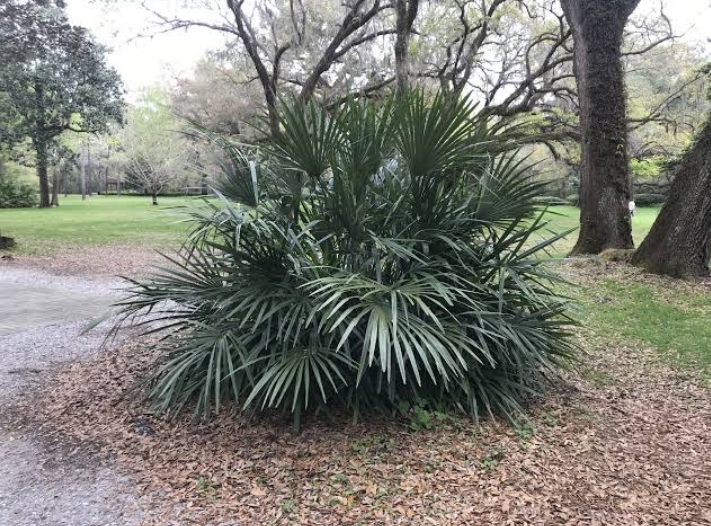
Needle palm in nature is a rounded shrub-like palm featuring deep green foliage with sharp needles. The generally grows between 4 and 8 feet tall and palm suckers along the stem to form dense clumps. The common name needle palm comes probably from the long black spines that emerge from its leaf sheaths. This palm is easy to propagate from suckers and in many places, it is generally used as textural accent or a foundation plant.
Needle palm is one of the most cold-hardy variety of palm that not only grows successively in South Carolina but also in the entire United States and Canada. It is indeed a popular palm with very many gardeners cherishing its ability to give indoor settings and outdoor beds a more tropical feel and look with just little care. Some gardeners also love this palm because of its versatile nature of being able to grow in both sunny and shady locations.
Key Highlights
- Scientific Name: Rhapidophyllum hystrix
- Common Name: Needle Palm
- Size: 4-8 feet tall
- Native Area: United States
- Leaves: Deep-green
Saw Palmetto Palm
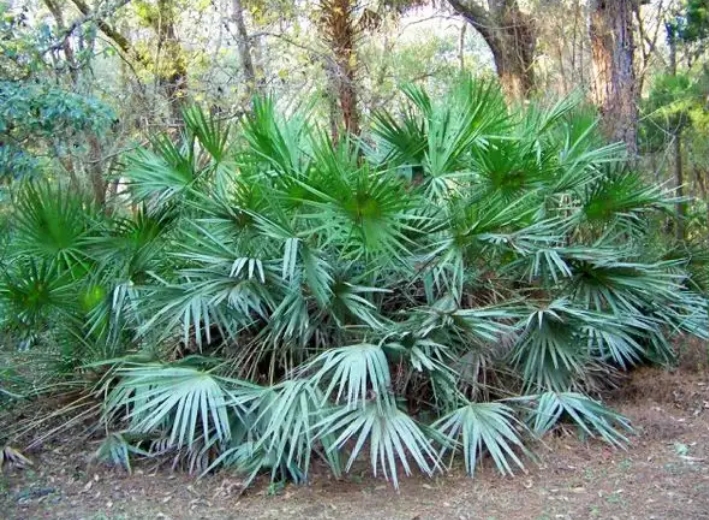
Saw palmetto is small palm with fan-shaped clumps of green or bluish green leaves with sharp spines on their edges. Its trunks usually creep along the ground, rooting and branching as it grows. It can spread to 20 feet wide when the stems grow on the soil surface in a clump form. When the palm grows into an erect form, the thick stems resemble trunks and can go beyond 12 feet.
In South Carolina the palm is generally doesn’t get higher than 6 feet and you will find it in many places being used for mixed shrub beds or foundation plantings. Saw palmetto is not only an attractive garden masterpiece, but also doesn’t require a lot of attention in terms of maintenance and can live hundreds of years.
This is typically a slow growing palm, with trunk growing only a fraction of an inch each year. When the palm is fully grown its inversive tendencies becomes the biggest challenge you will have to deal with. Also, its tiny spines are sharp enough to easily cut skin or rip fabric and therefore it is usually advisable not to plant a saw palmetto by a sidewalk or area where children love to play.
Key Highlights
- Scientific Name: Serenoa repens
- Common Name: Saw palmetto
- Size: 7-10 feet tall
- Native Area: United States
- Leaves: Dark-green
Windmill Palm
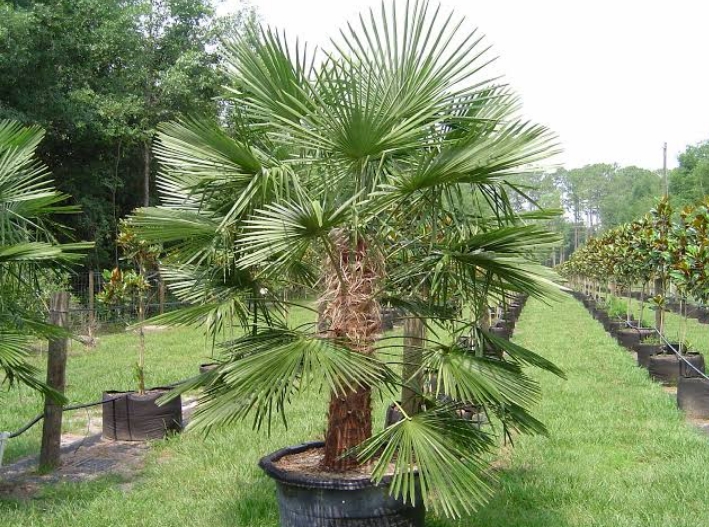
The windmill palm is a majestic palm that grows effectively all-over United States, including South Carolina. It is characterized by long slender trunk and wide-spreading fine-toothed fronds that look-like they’re waving in the wind or creating a windmill shape. The palm generally grows anywhere between 12 and 50 feet. Its solitary trunk appears rough and shaggy due to leftover dried petioles from shed leaves.
This palm’s tolerance of cool summers and cold winters makes it highly valued by palm enthusiasts, landscape designers and gardeners. It can be grown in large containers and overwintered indoors. In South Carolina the Windmill palm planting often occurs in confined areas where it is utilized as an accent, specimen or patio plant. Typically, this is a plant that doesn’t require so much care, it typically grows slowly, gaining less than a foot each year. Though with fertilizer application, and regular watering its growth can be hastened.
Key Highlights
- Scientific Name: Trachycarpus fortune
- Height: 30-90 feet tall
- Leaves: Light to Dark green
- Native Area: Asia (Japan, China & Myanmar)
Date Palm
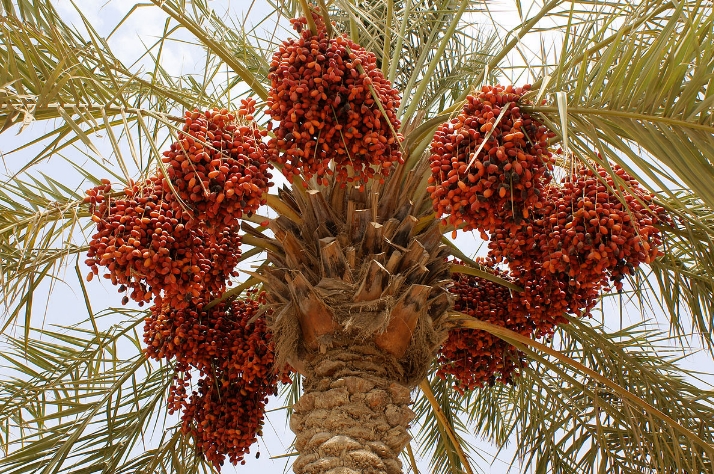
Date palm is one of the most prominent palm tree species growing in North America for many decades. Date palms generally grow tall like a tree, between 30-90 feet with a single trunk or several trunks sprouting in a cluster. It also features long gray-green feathery-type fronds with an upward arching habit. The fronds can reach 16 feet in length and help the tree adapt to long summers without rain.
This is a widely popular palm in South Carolina due to its edible date-type fruits and stately growth habit. The popularity has led to its widespread planting in many commercial and some residential landscapes. It is valued for plaza and street uses as well as in courtyards and raised planters. The good thing about this palm is its high tolerance of heat, aridity, salt and wind. It is indeed a spectacular and exceptional landscape palm but requires plenty of yard space. It is also a slow-growing in nature.
Key Highlights
- Scientific Name: Phoenix dactylifera
- Size: 30-80 feet tall
- Native Area: Africa, Middle East
- Habit: Upright, Arching
Queen Palm
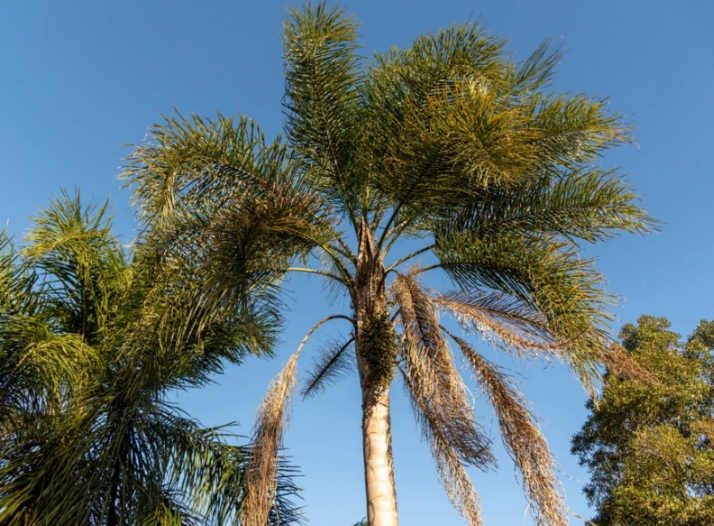
Queen palm tree is a feather palm in nature and popular ornamental garden tree not only in South Carolina but throughout the world. The tree can reach up to 60 feet at maturity depending with the cultural environment and care. Just like other palms that towers tall, the trunk is smooth, exceptionally straight and branchless, but crowned with thick graceful arching glossy green fronds. The feathery, glossy green fronds are pinnately compound each with a length of up to 16 feet long. Creamy flowers are produced from within the leaves during the spring and summer months.
The good thing about this palm is that it is fast growing and once established they’re moderately salt and drought tolerant. The tree can also tolerate cold winters but when temperature drop to sub-zero levels the palm somehow gets damaged. It is also important to know that the queen palm tree has a shallow root base and easily fall during high winds. Despite all this, this remains to be a beautiful palm for formal plantings, as a specimen or street tree.
Key Highlights
- Scientific Name: Syagrus romanzoffiana
- Native Area: South America
- Size: 30-60 feet
- Leaves: Glossy-green, feather-like fronds
- Nature: Slow-growing
Silver Bismarck Palm
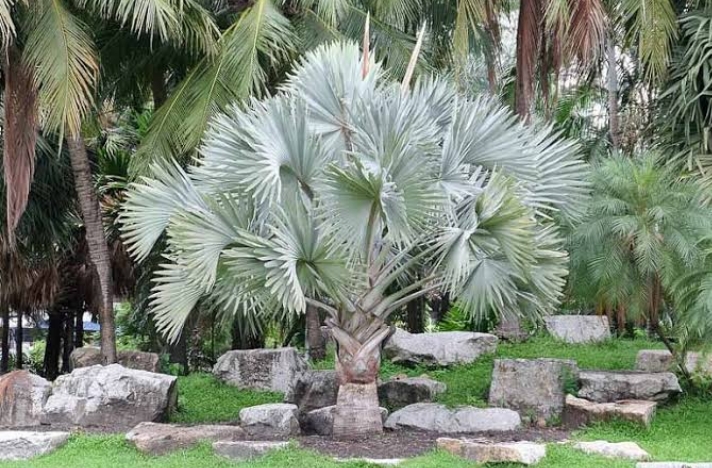
Native to the Madagascar savanna and named after the first chancellor of the German Empire, Otto von Bismarck is one of the most sizzling and desirable fan palms in South Carolina. This palm consists of a medium-sized trunk, slightly bulging at the base and symmetrical foliage with prominent silvery blue-green fan-shaped fronds growing up to 5 feet long. The palm works marvelous in creating a focal point in a large garden.
Bismarck palm is easy to grow in almost any corner of South Carolina because by their nature, they are very tolerant and adaptable to any kind of climate. The most common problem associated with growing Bismarck palm is its susceptibility to wind and cold damage. Though in most cases it quickly recovers from cold damage once temperatures improve from sub-zero level. Also, because of their massive crowns, they need plenty of yard space to grow effectively.
Key Highlights
- Scientific Name: Bismarckia nobilis
- Common Name: Bismarck palm
- Native Area: Madagascar
- Leave: Silvery blue-green
Guadalupe Palm
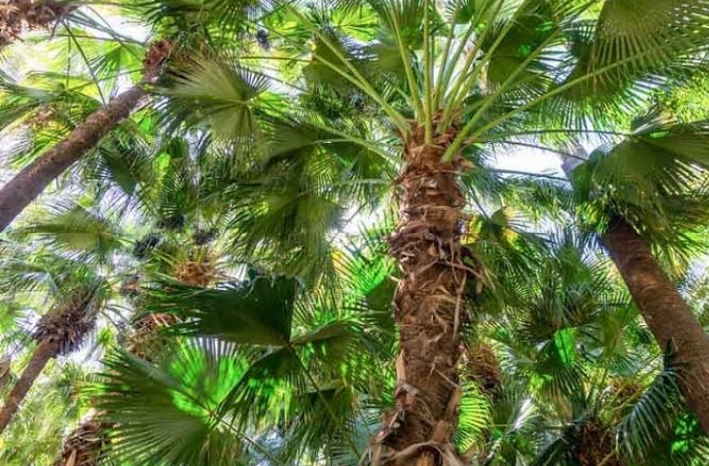
Guadalupe is generally a small to medium sized palm that reaches a height of between 30 and 36 feet with canopy of bluish-green, fan-shaped fronds. It bears fruits having almost similar taste to those of date palms. This palm is native to Guadalupe Island, a small volcanic island off the western coast of Mexico.
Guadalupe is quite tolerant to hot summers and cold winters. In South Carolina, you won’t move around and miss to see this palm tree lining the avenues and adorning front and backyards. Guadalupe is excellent for coastal plantings and can grow well in areas such as Charleston, Georgetown, Lichfield, Hilton Head Island, Edisto etc.
Key Highlights
- Scientific Name: Brahea edulis
- Common Name: Guadalupe Palm
- Native Area: Mexico
- Nature: Medium-size palm